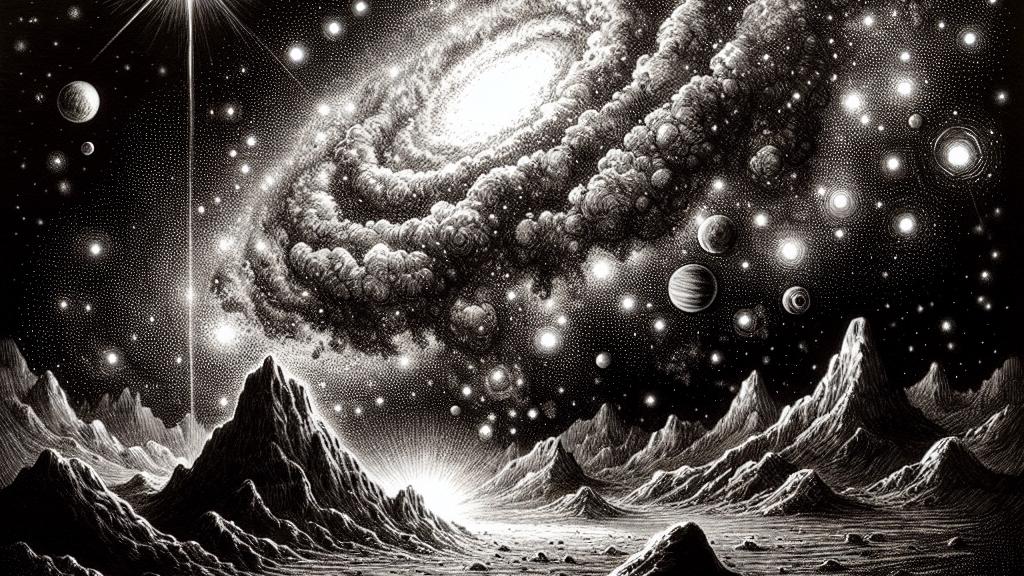Exploring How Stars Formed in the Early Universe
Overview
- Exciting discoveries from the Small Magellanic Cloud reveal the secrets of early star formation.
- Key differences between filamentary and fluffy clouds reshape our understanding of star birth.
- New perspectives on star formation dynamics illuminate the evolution of the universe.

The Journey Back in Time
Picture this: astronomers peering through a cosmic window, glancing back 10 billion years into the past. This is precisely what scientists at Kyushu University did by studying the Small Magellanic Cloud (SMC), a dwarf galaxy that's not just nearby—it's a treasure trove of information! Sitting roughly 20,000 light-years from Earth, this celestial gem contains only about one-fifth of the heavy elements found in our own Milky Way, offering a glimpse into the primordial conditions that allowed the first stars to emerge. By examining the SMC, researchers can explore how gas and dust coalesced to create the cosmic objects that ultimately lit up the universe.
The Cosmic Nurseries: Where Stars Are Born
Stars begin their lives in stellar nurseries—vast swaths of space filled with molecular clouds of gas and dust, looking like beautiful floating islands. These regions are responsible for the delicate artistry of star creation. Surprisingly, recent research shows that the star formation in these nurseries doesn’t follow a strict pattern. Instead, some early stars formed in what researchers refer to as 'fluffy' clouds, marking a shift in our comprehension of star birth. These discoveries spark curiosity about the myriad ways stars can light up—and illuminate—our universe. Just think: if some stars are born in fluffy clouds, what other extraordinary nursery environments might exist out there?
Examining Cloud Structures: Fluffy vs. Filamentary
When we break it down, the clouds in which stars are formed can take on different shapes that play pivotal roles in the star formation process. The scientists observed that around 60% of the molecular clouds investigated had that characteristic filamentary structure—long, slender formations spanning 0.3 light-years. Meanwhile, the remaining 40% exhibited a fluffy appearance—soft and spread out. This striking distinction reveals how environmental conditions—like temperature fluctuations or interactions with nearby clouds—can vastly change the structure of a molecular cloud. Imagine different weather systems creating unique landscapes on Earth; these cloud structures provide exciting evidence of how dynamic and diverse our universe really is!
The Big Picture: Cosmic Implications of Discovery
With every revelation about the Small Magellanic Cloud, we stitch together a richer tapestry of the cosmos. This ongoing journey is like piecing together a grand puzzle, in which each cloud structure contributes to our understanding of stellar evolution. By showcasing the diversity of environments that give rise to stars, scientists are setting the stage for future explorations—unearthing ever more profound mysteries of the universe. As technology advances, these explorations will enable us to reach further into space, encouraging us to ask exciting new questions: How do these cloud characteristics influence the birth and fate of galaxies? Will we find even more extraordinary star nurseries beyond the SMC? One thing is certain: our quest to unravel the universe's secrets is far from over!

Loading...